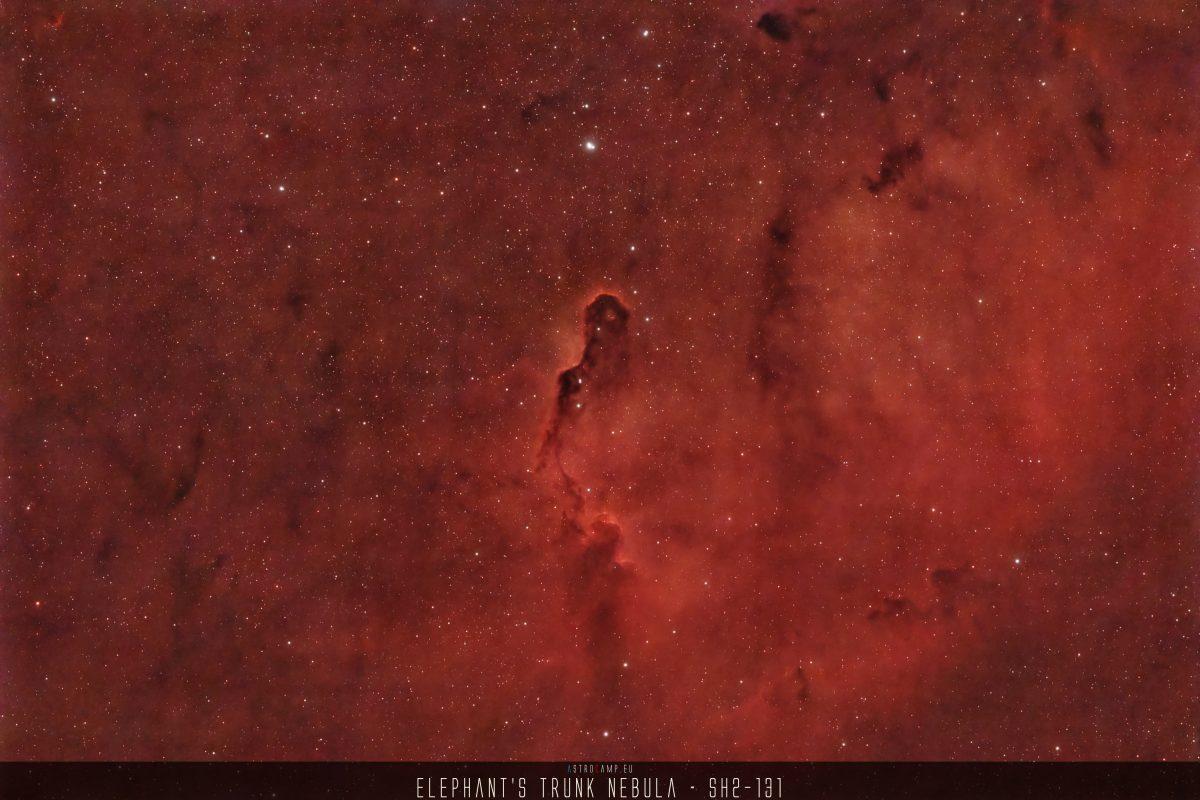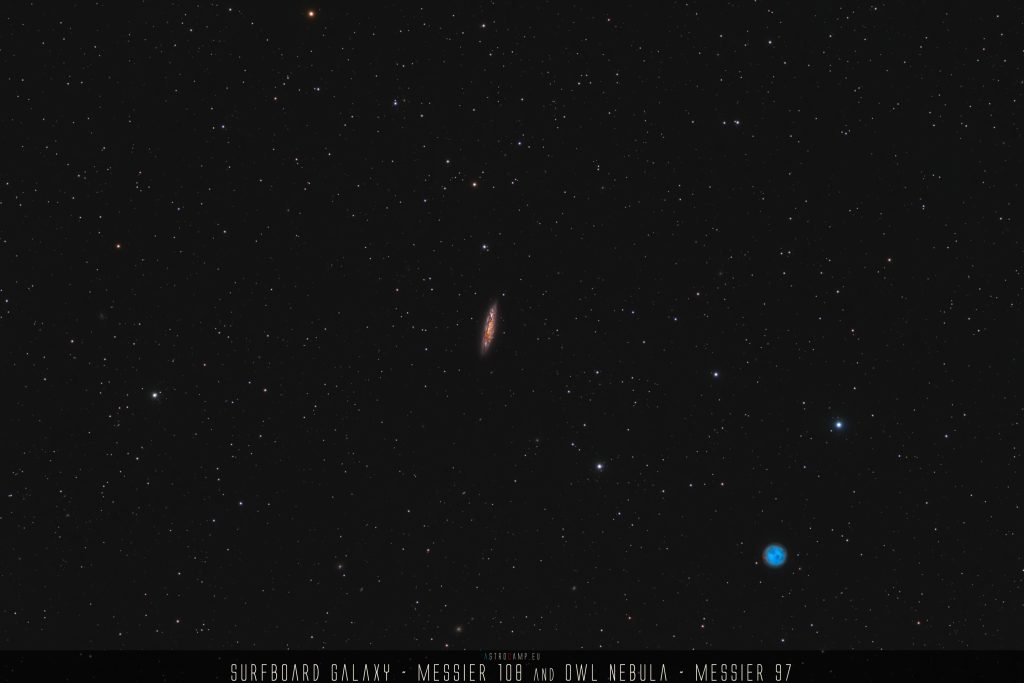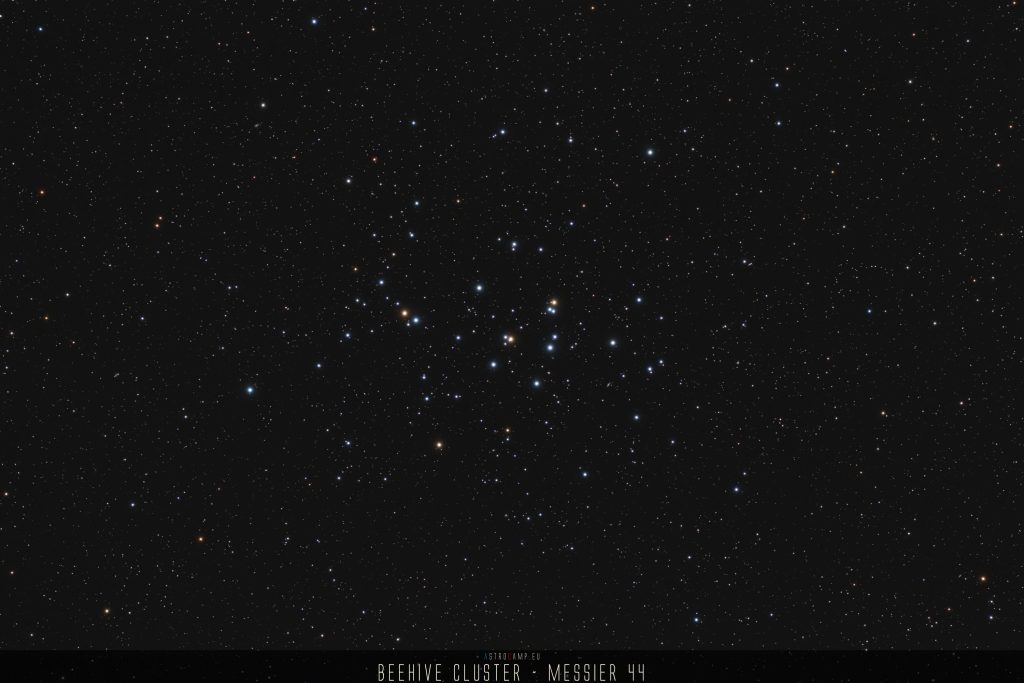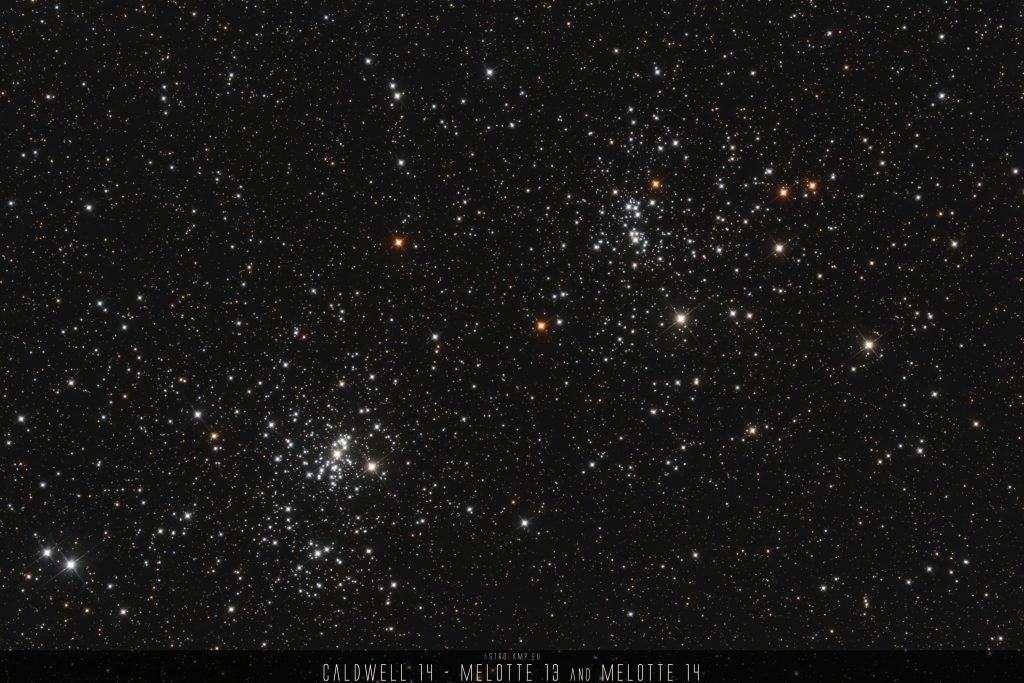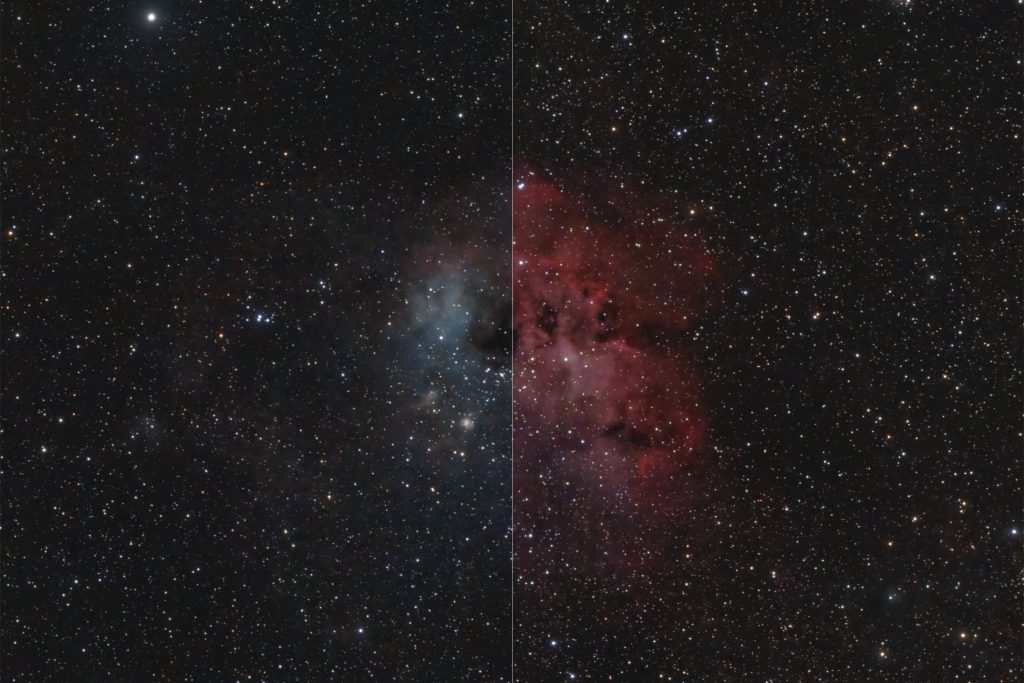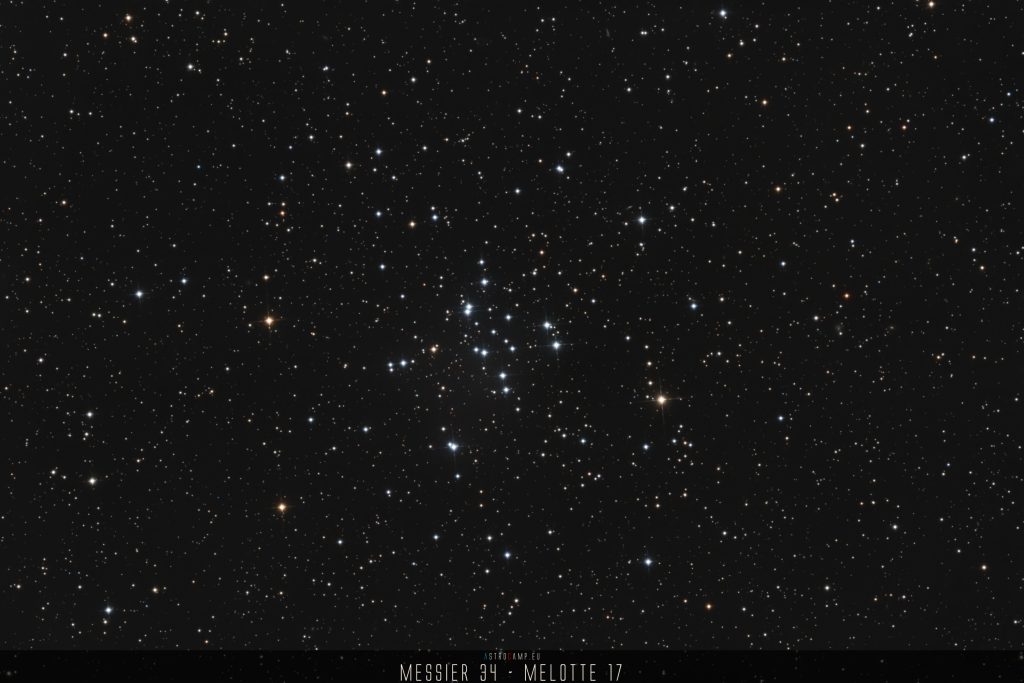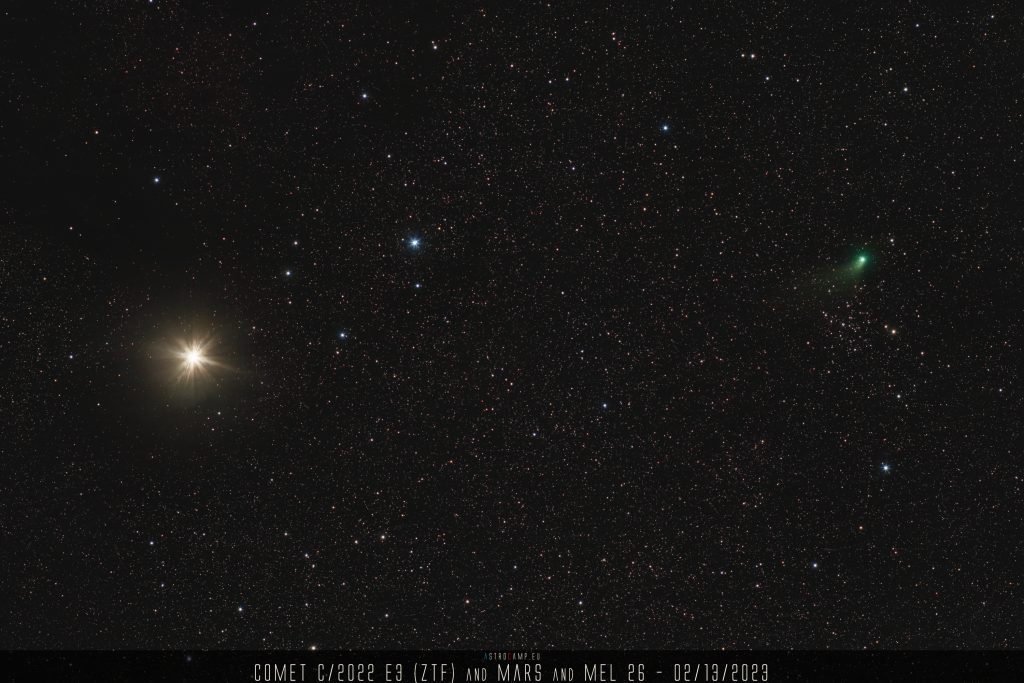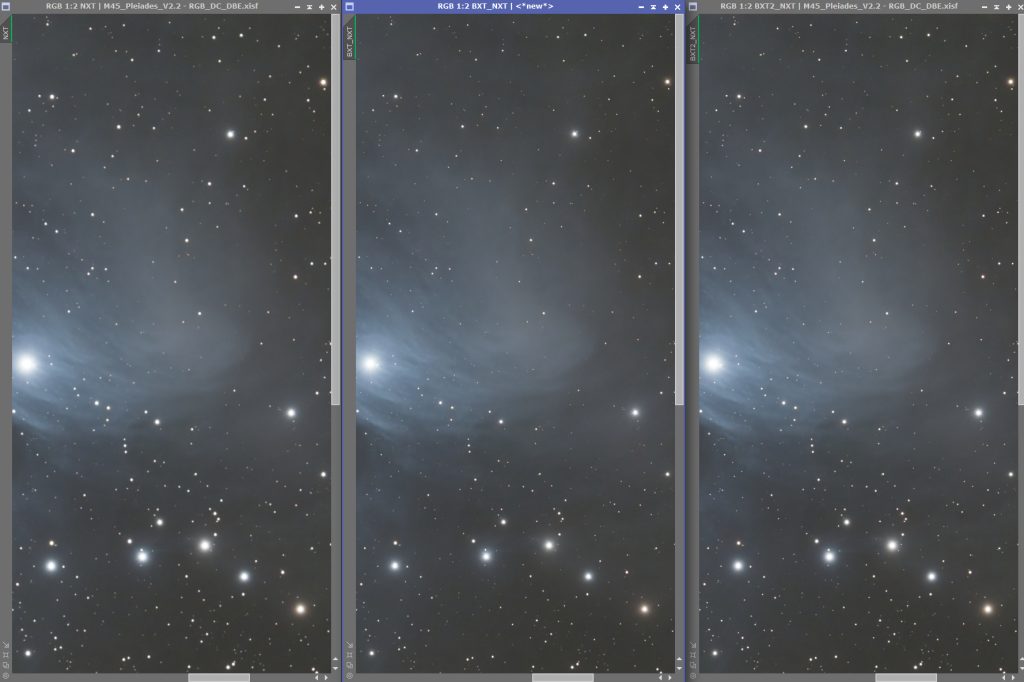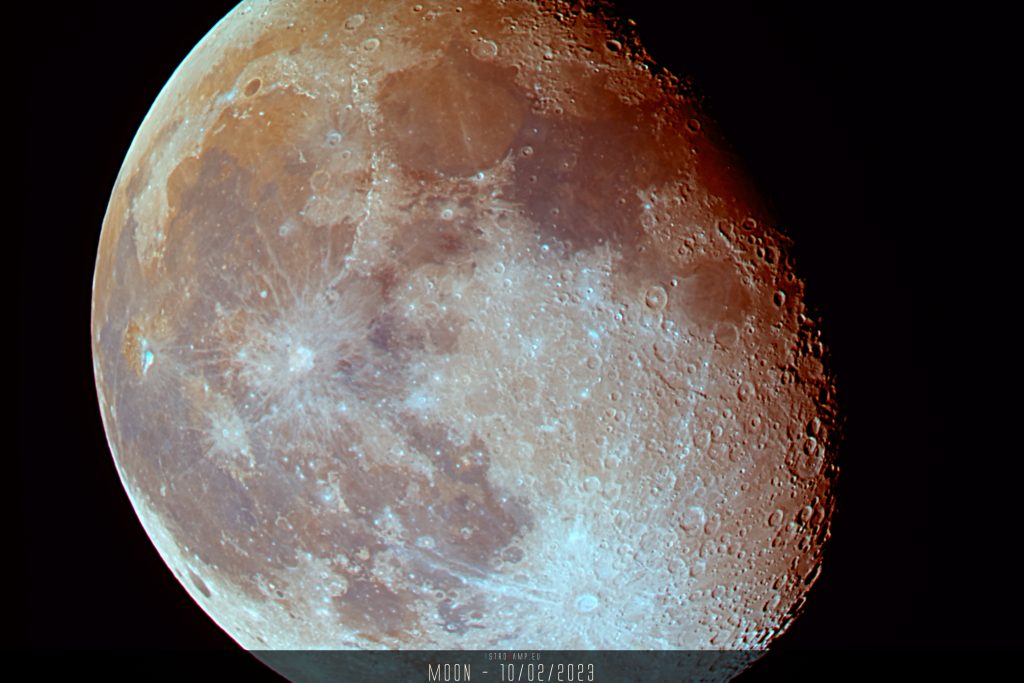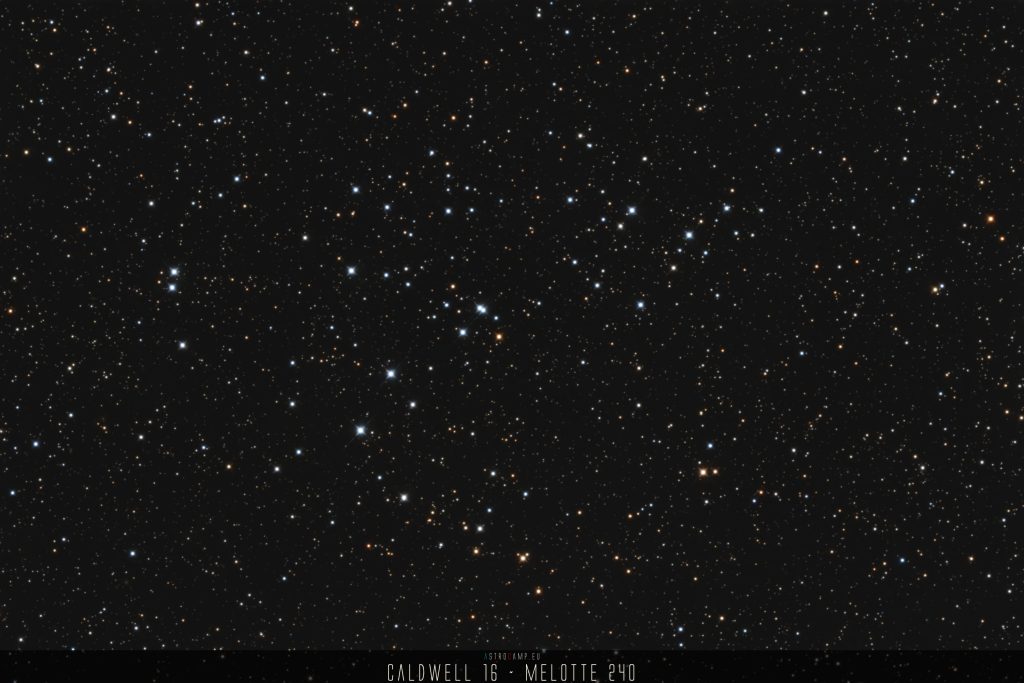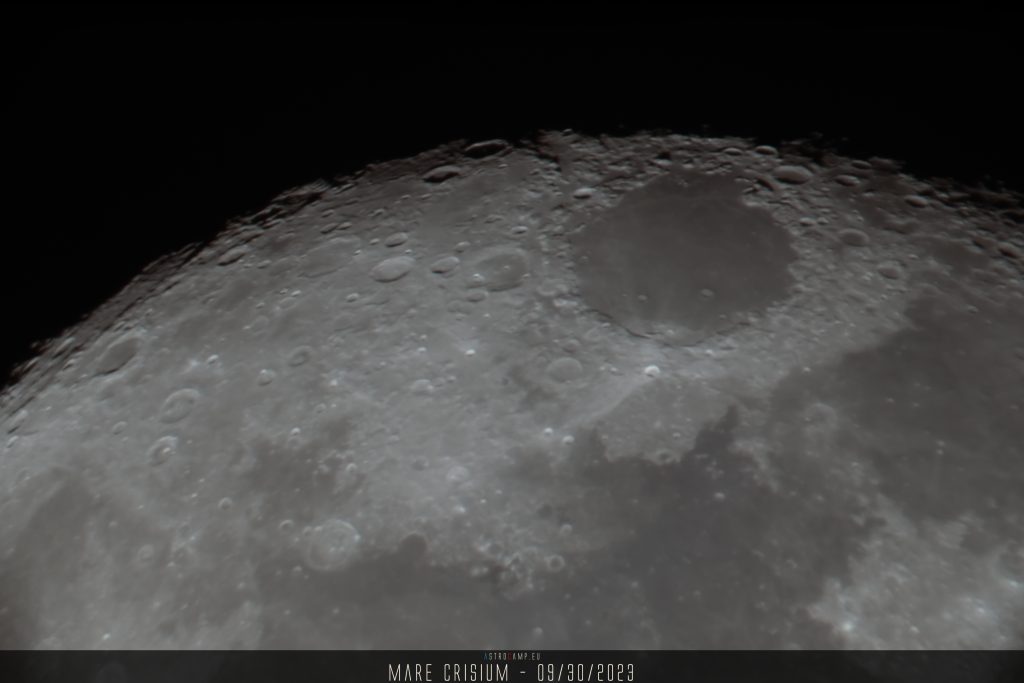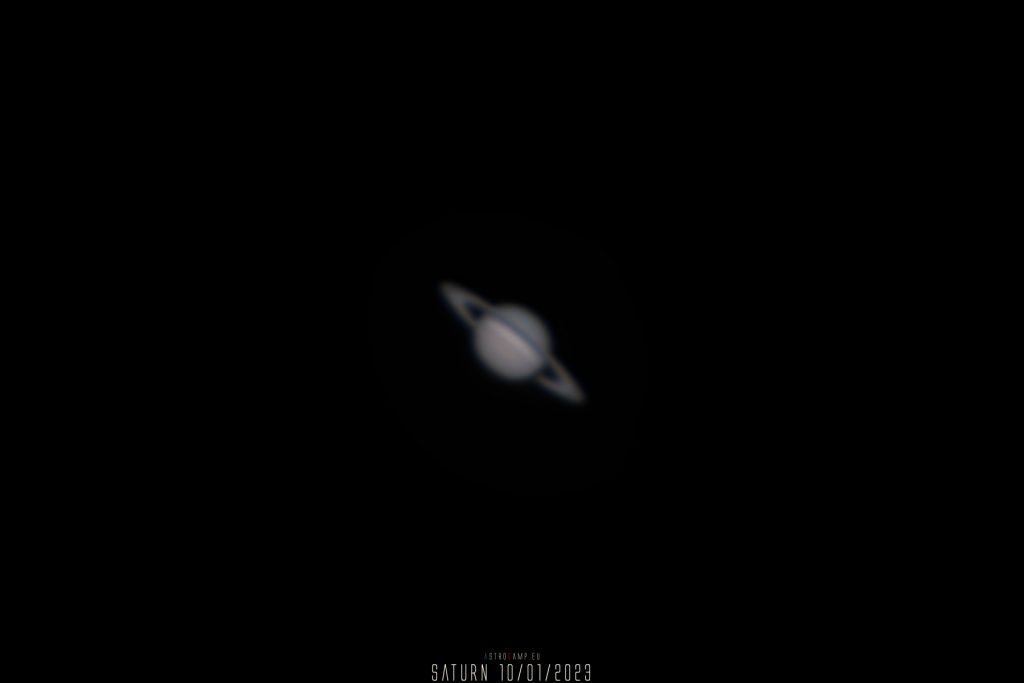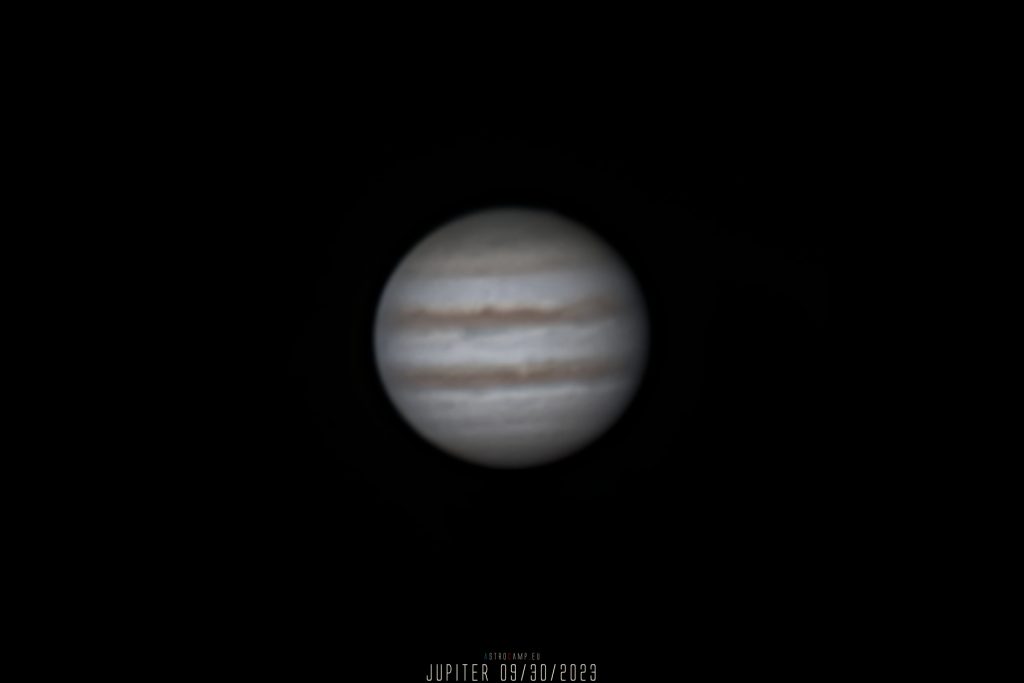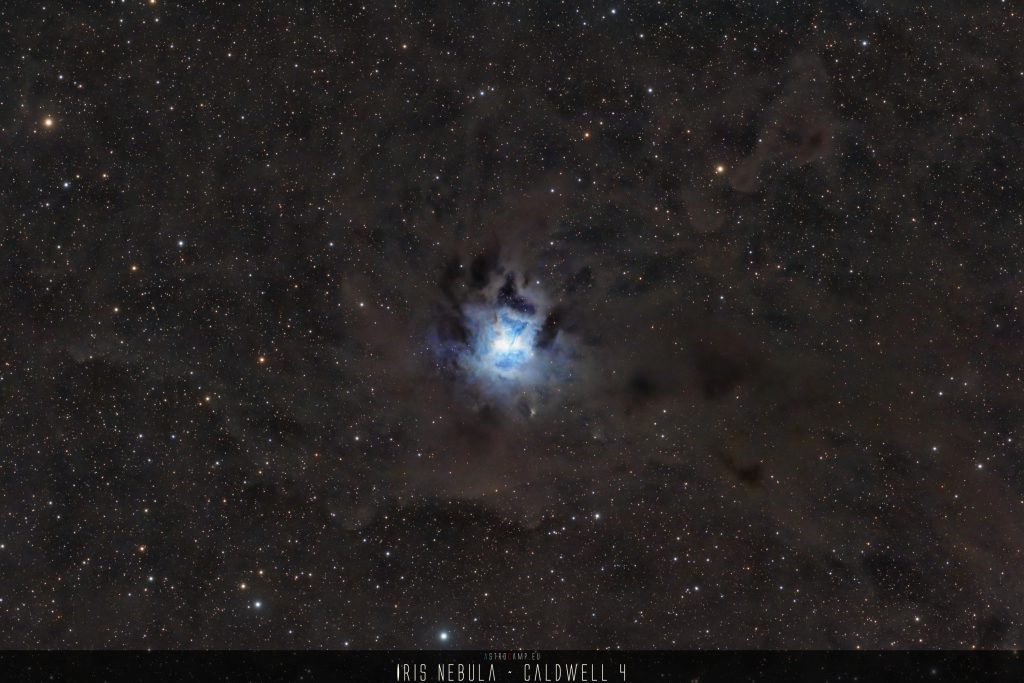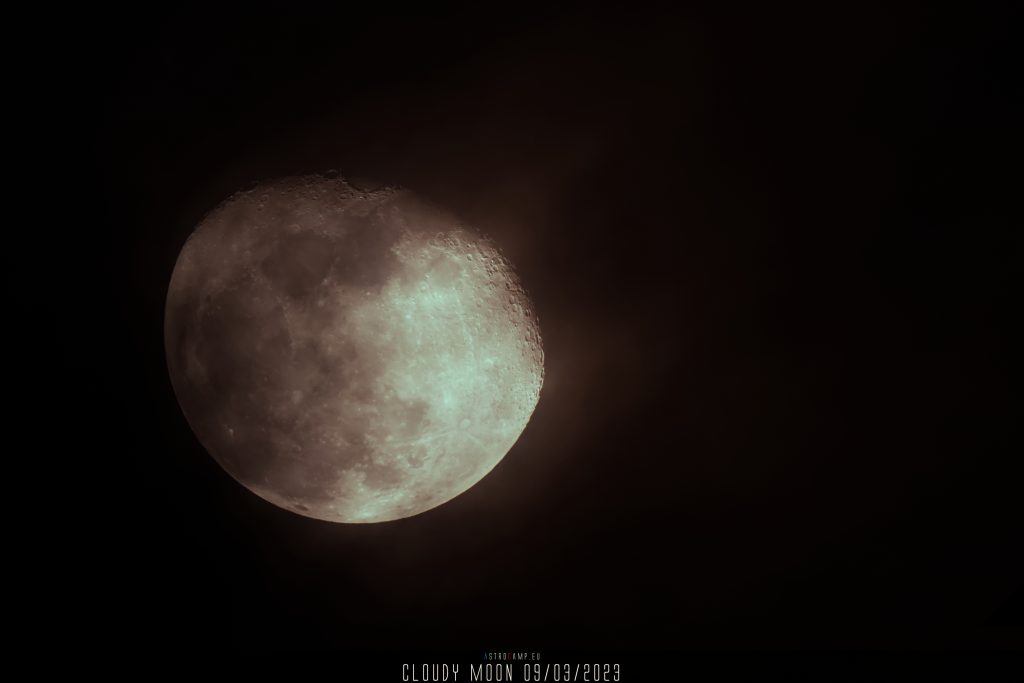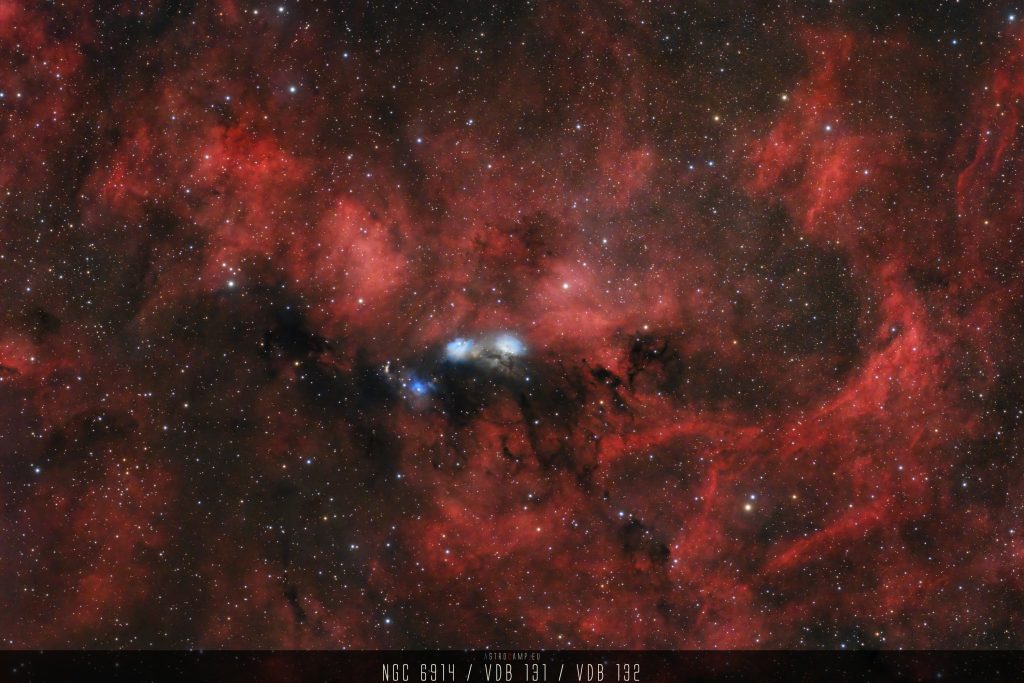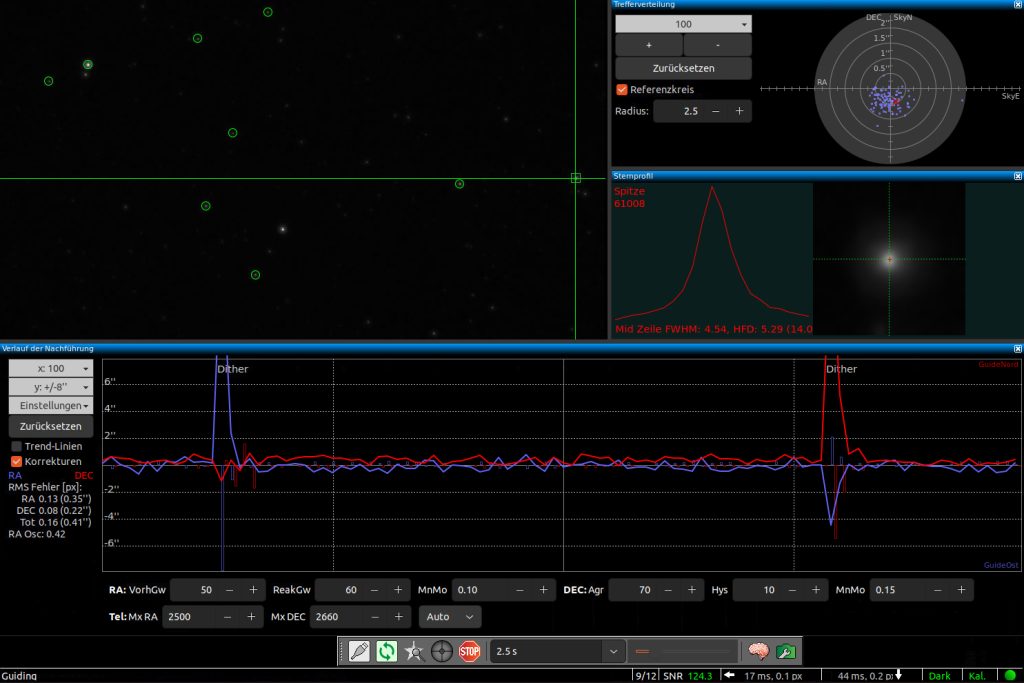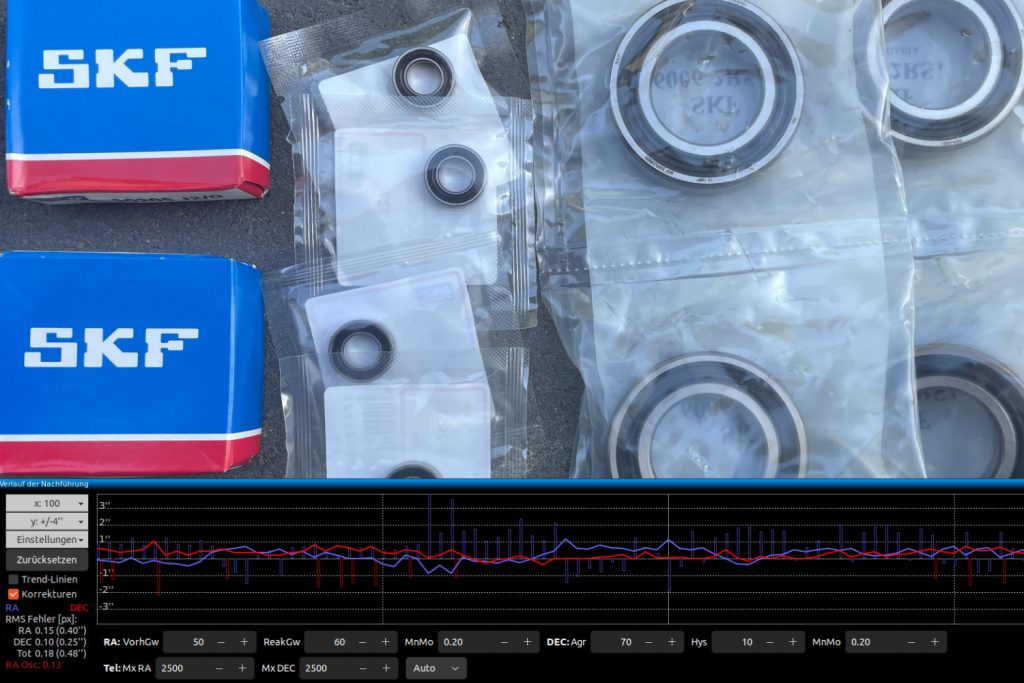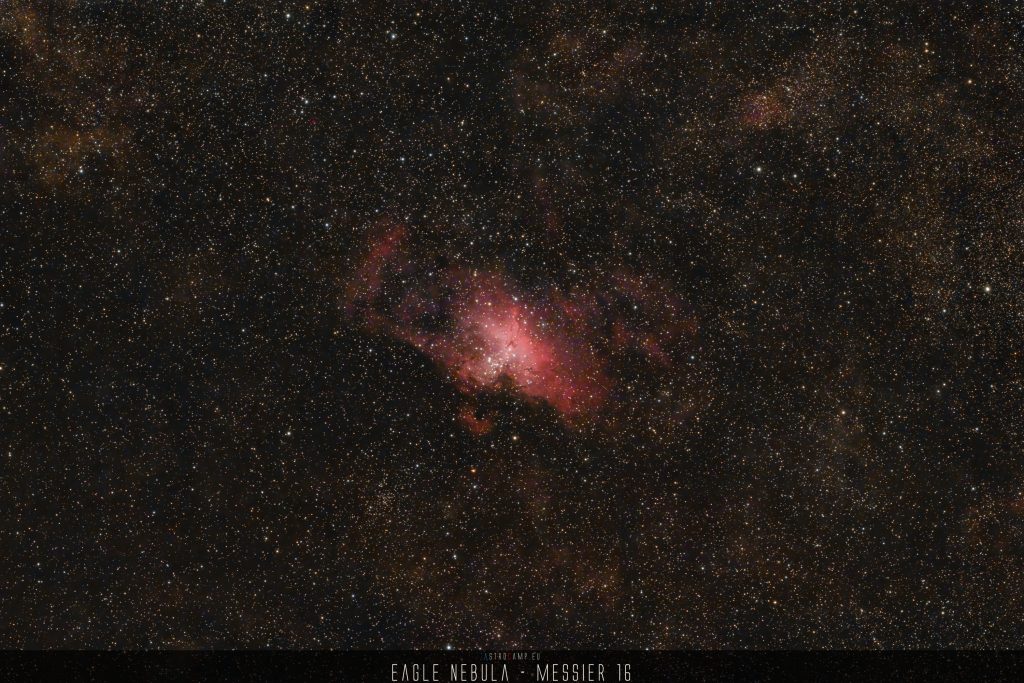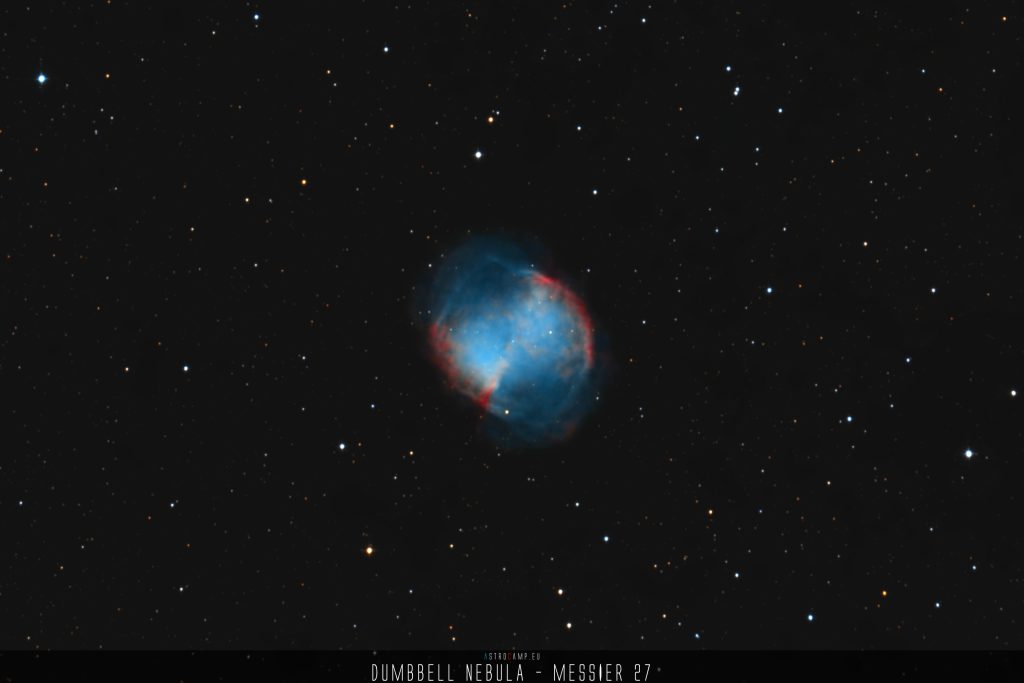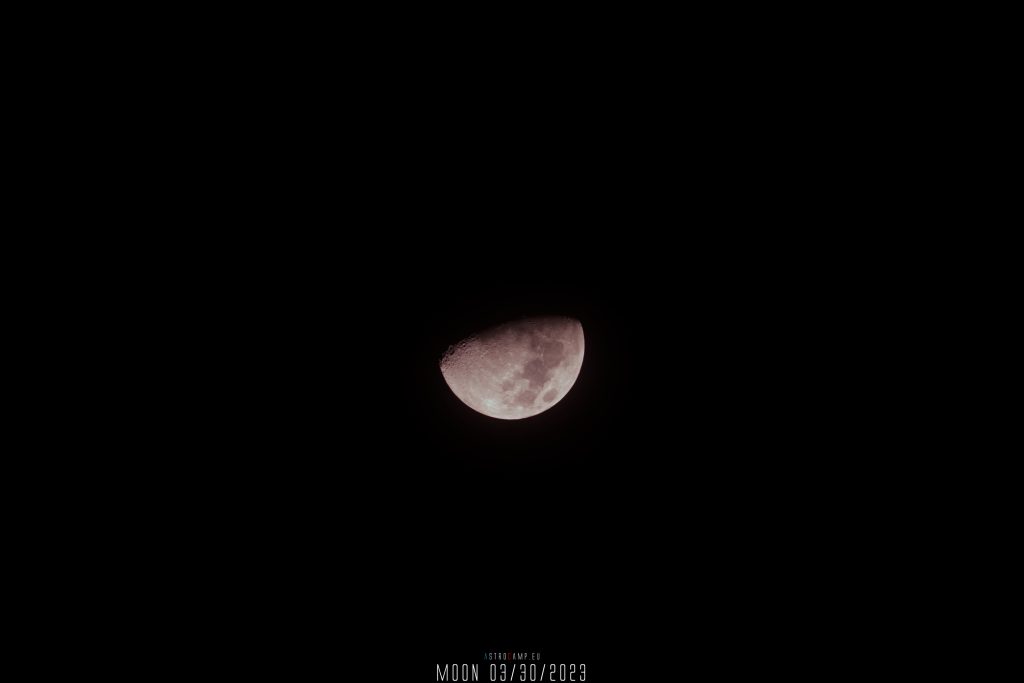The Elephant Trunk Nebula is a beautiful cosmic object due to its unique and fascinating shape, as well as the glowing colors reflected by the gas and dust clouds. It is an amazing demonstration of nature, showing how interstellar material can arrange itself in ways that remind us of familiar shapes and patterns on Earth, such as an elephant’s trunk.
Position and region
The Elephant’s Trunk Nebula is located in the constellation Cepheus, about 2,400 light-years away from Earth in the Perseus Arm of the Milky Way Galaxy. The nebula is part of a larger complex of interstellar gas and dust known as the Cepheus Molecular Cloud, which spans several degrees of the sky and includes other well-known nebulae such as IC 1396 and the Cave Nebula. The Elephant’s Trunk Nebula is situated near the border between the constellations Cepheus and Cygnus and can be seen with a telescope or binoculars.
Unique facts
- The nebula is shaped like an elongated cylinder, with a length of about 20 light-years and a width of about 5 light-years.
- The nebula’s unique shape and composition have made it a favorite subject for astrophotography, with many stunning images captured by both amateur and professional astronomers.
Brightness and size
The Elephant’s Trunk Nebula is a relatively dim object in the night sky, with an apparent magnitude of around 7. It is not visible to the naked eye but can be easily observed with a telescope or binoculars.
In terms of size, the nebula has a length of approximately 20 light-years and a width of around 5 light-years. It is a relatively small nebula compared to some other well-known objects, such as the Orion Nebula.
Names and numbers
- Sharpless 2-131 (Sh2-131): This is a designation from the Sharpless catalog, which is a list of H II regions (ionized hydrogen regions).
- LBN 451: This is a designation from the Lynds Bright Nebula catalog, which is a collection of bright emission nebulae.
- IC 1396A: This is the official designation for the nebula in the Index Catalog (IC) published by the Royal Astronomical Society of Canada.

